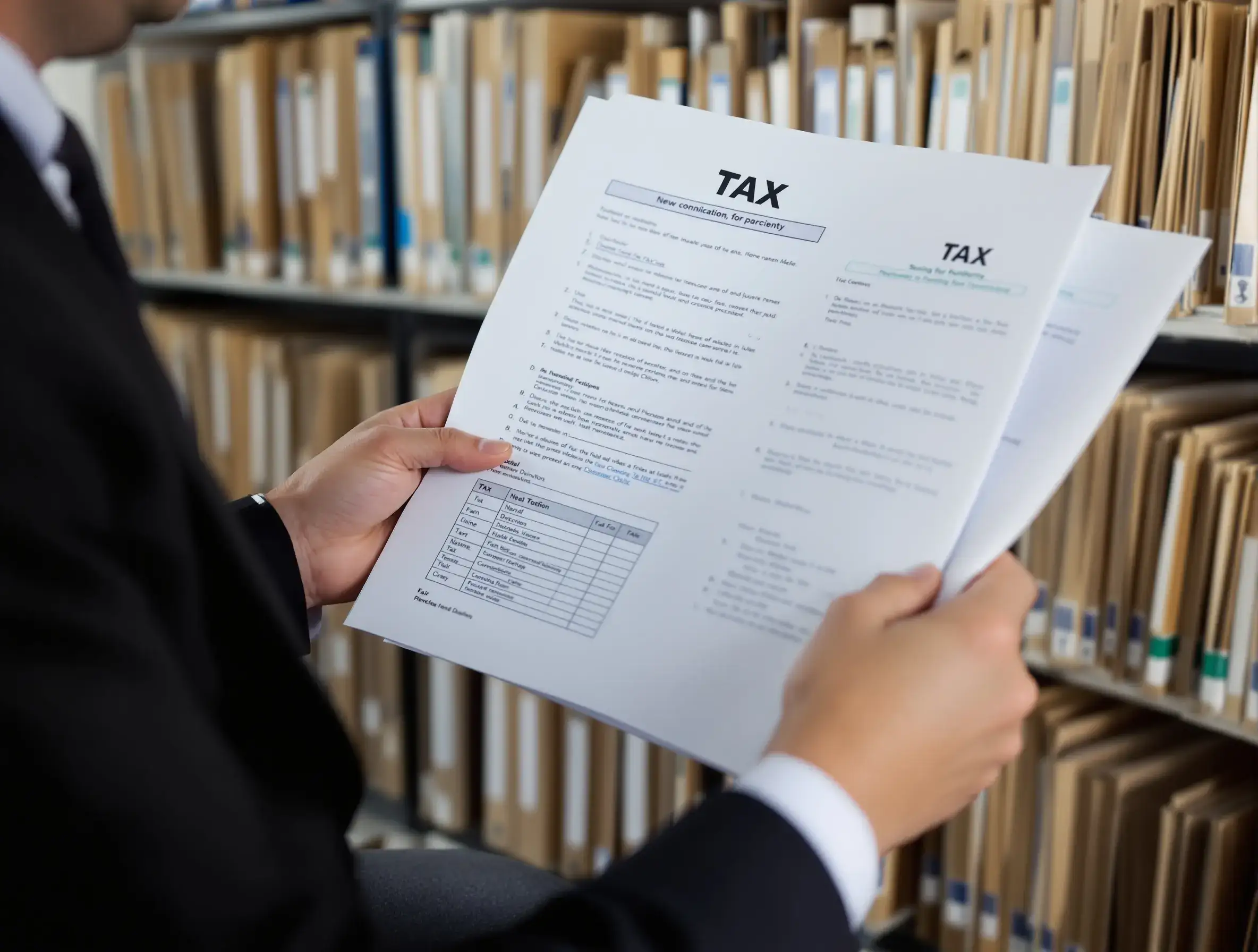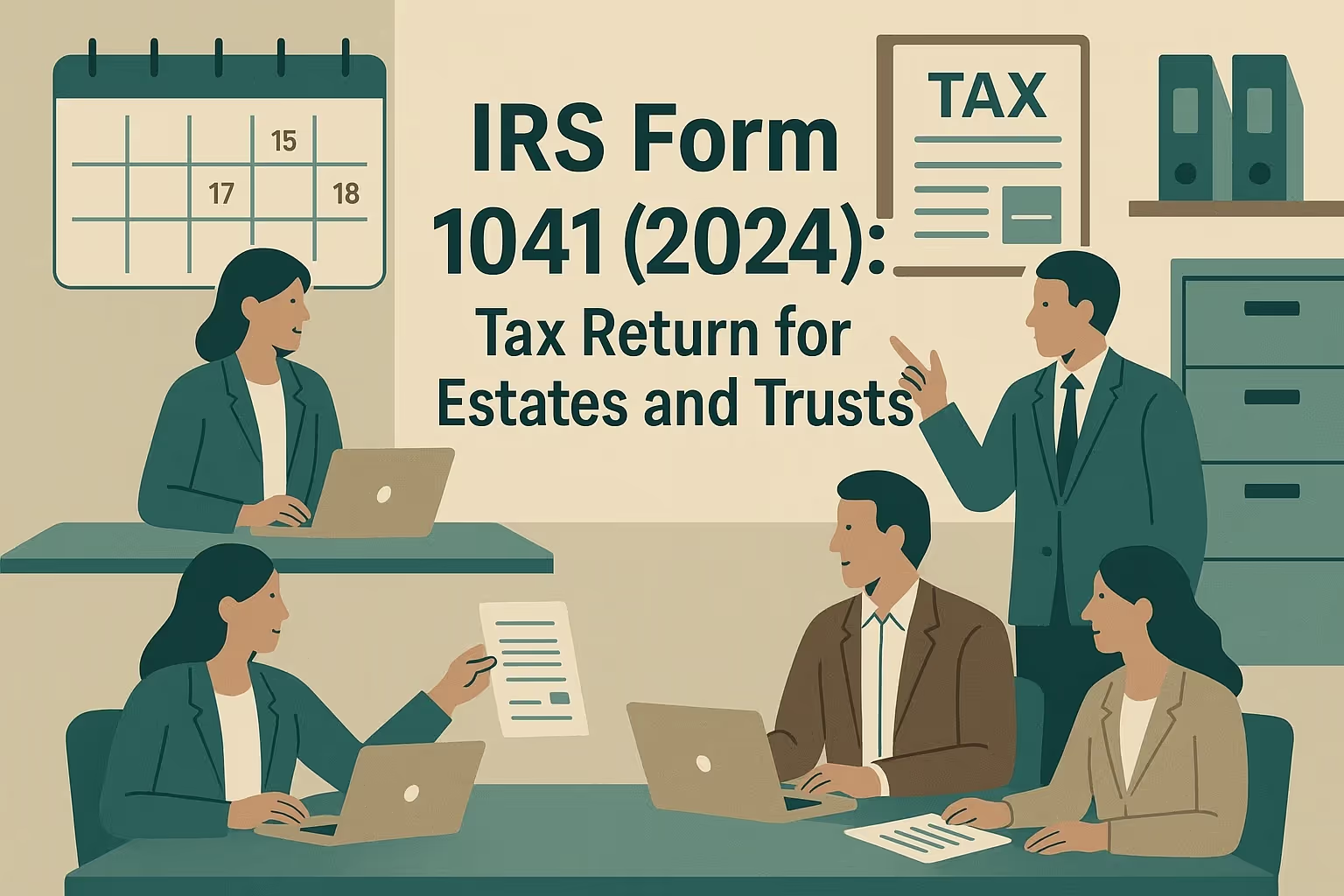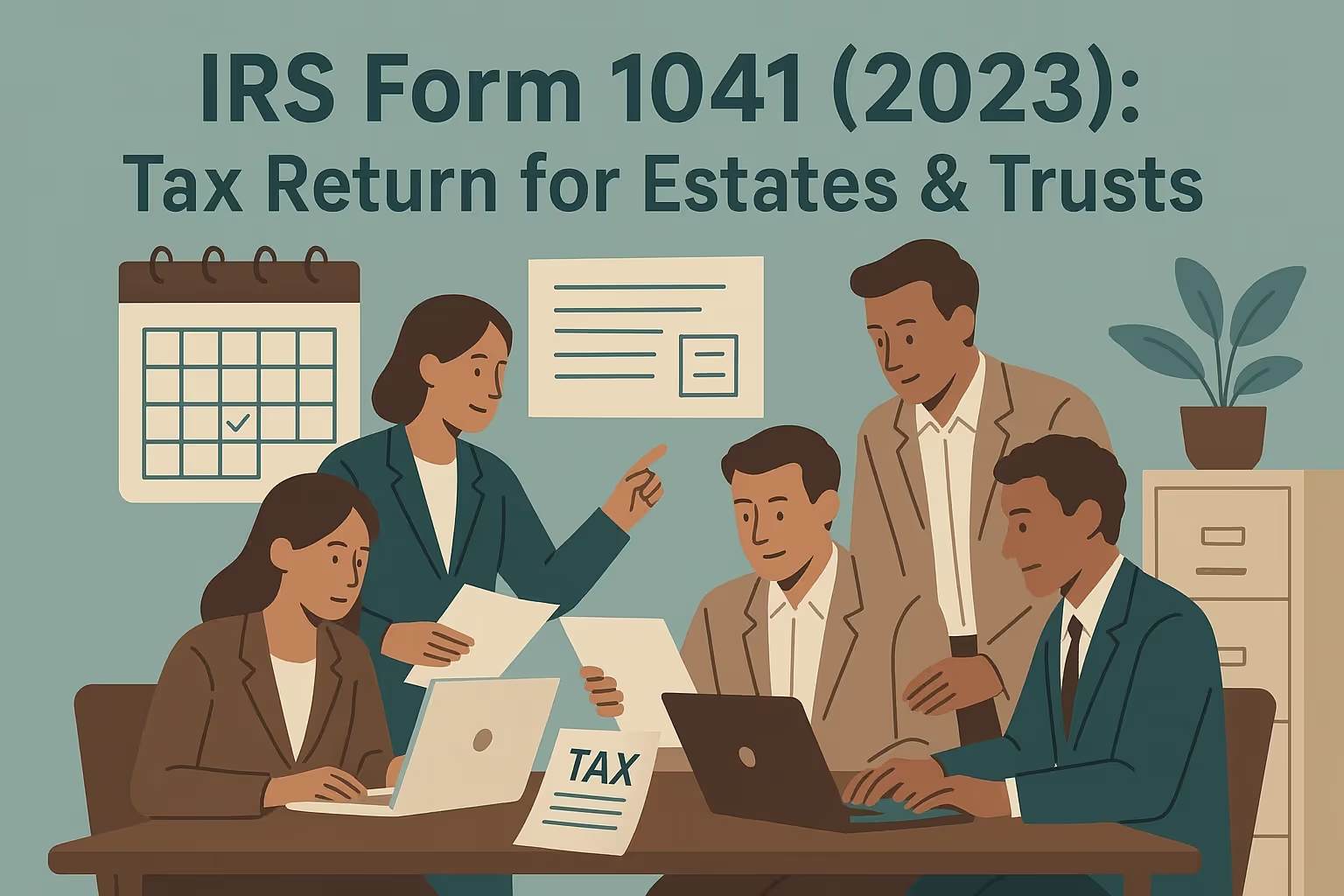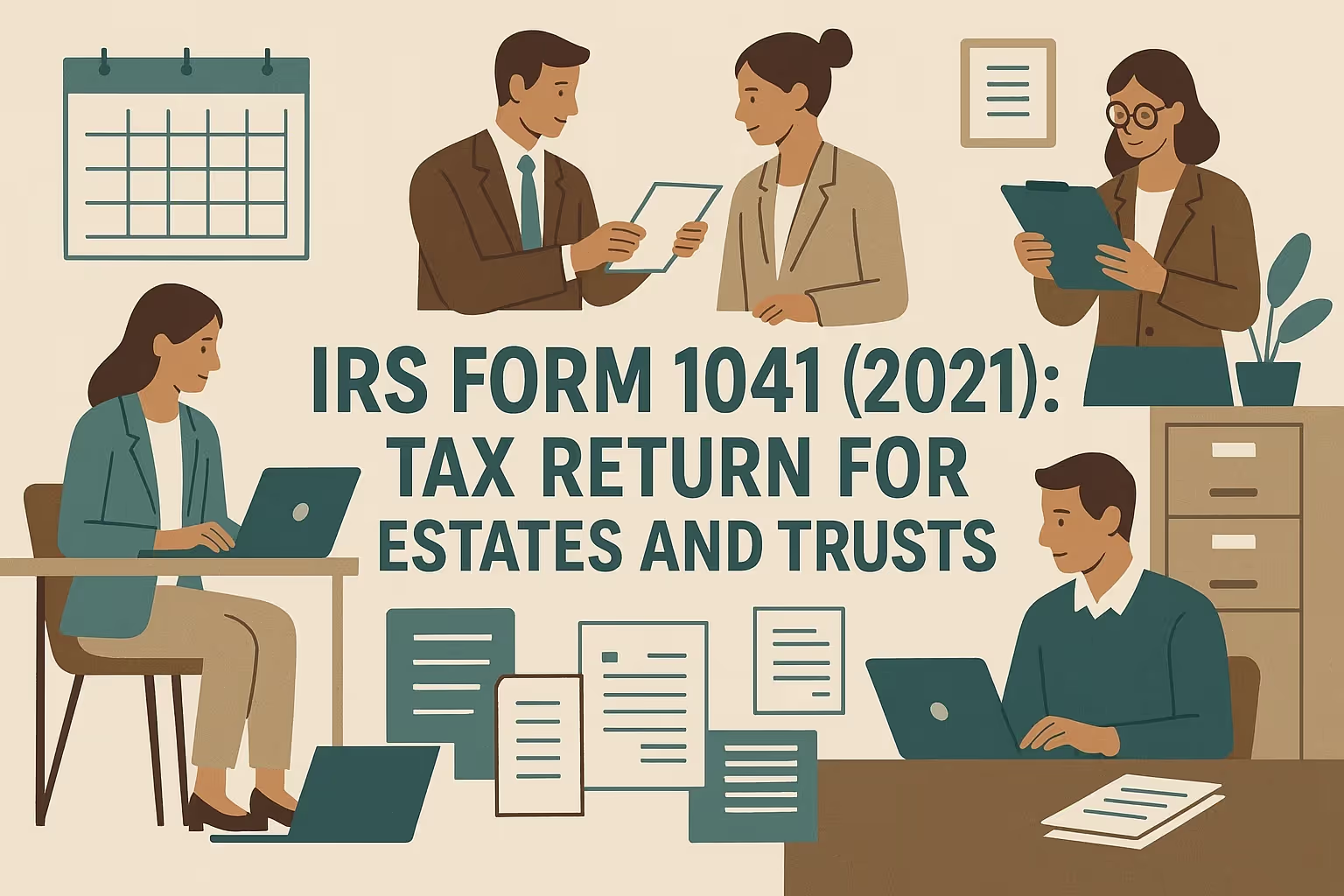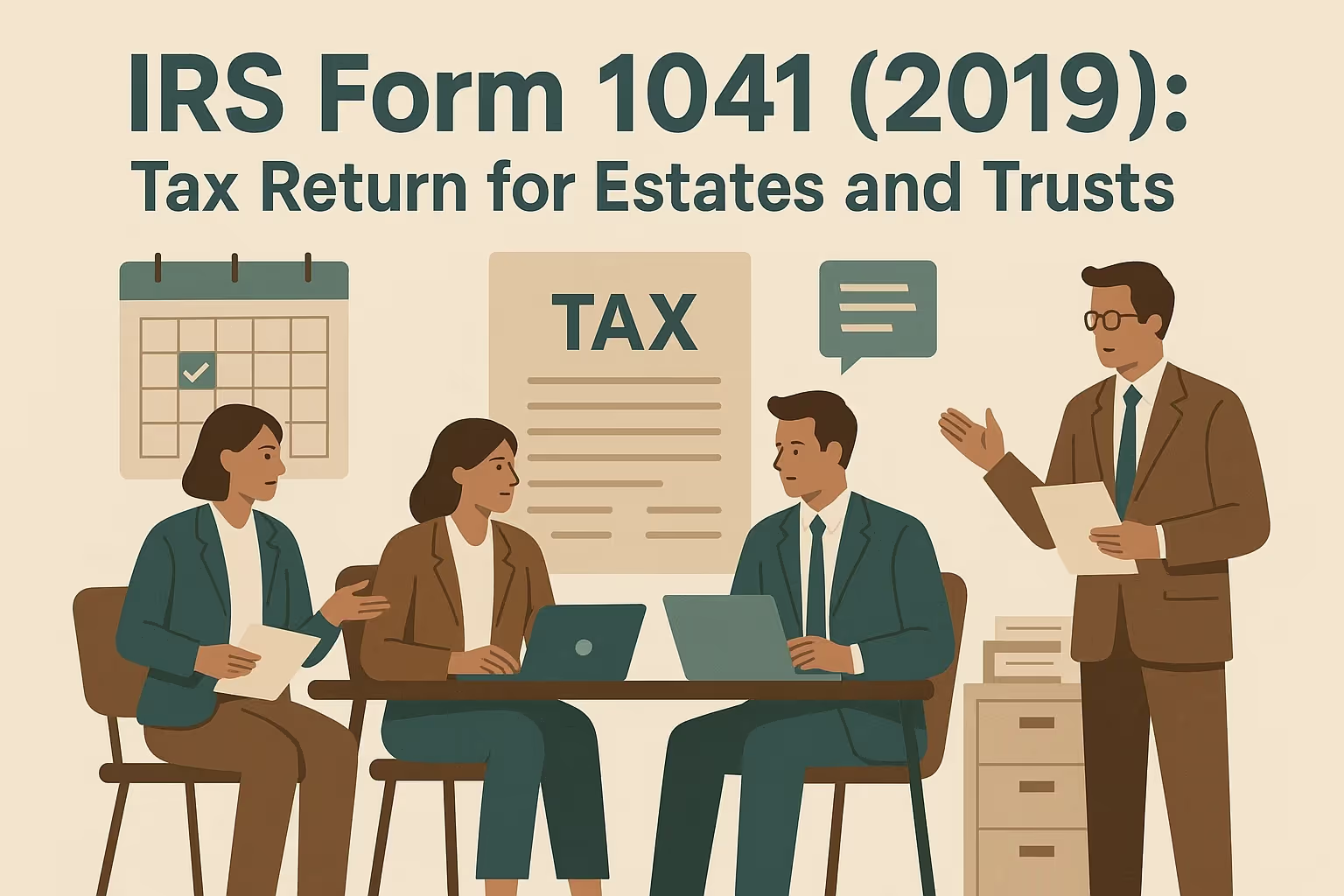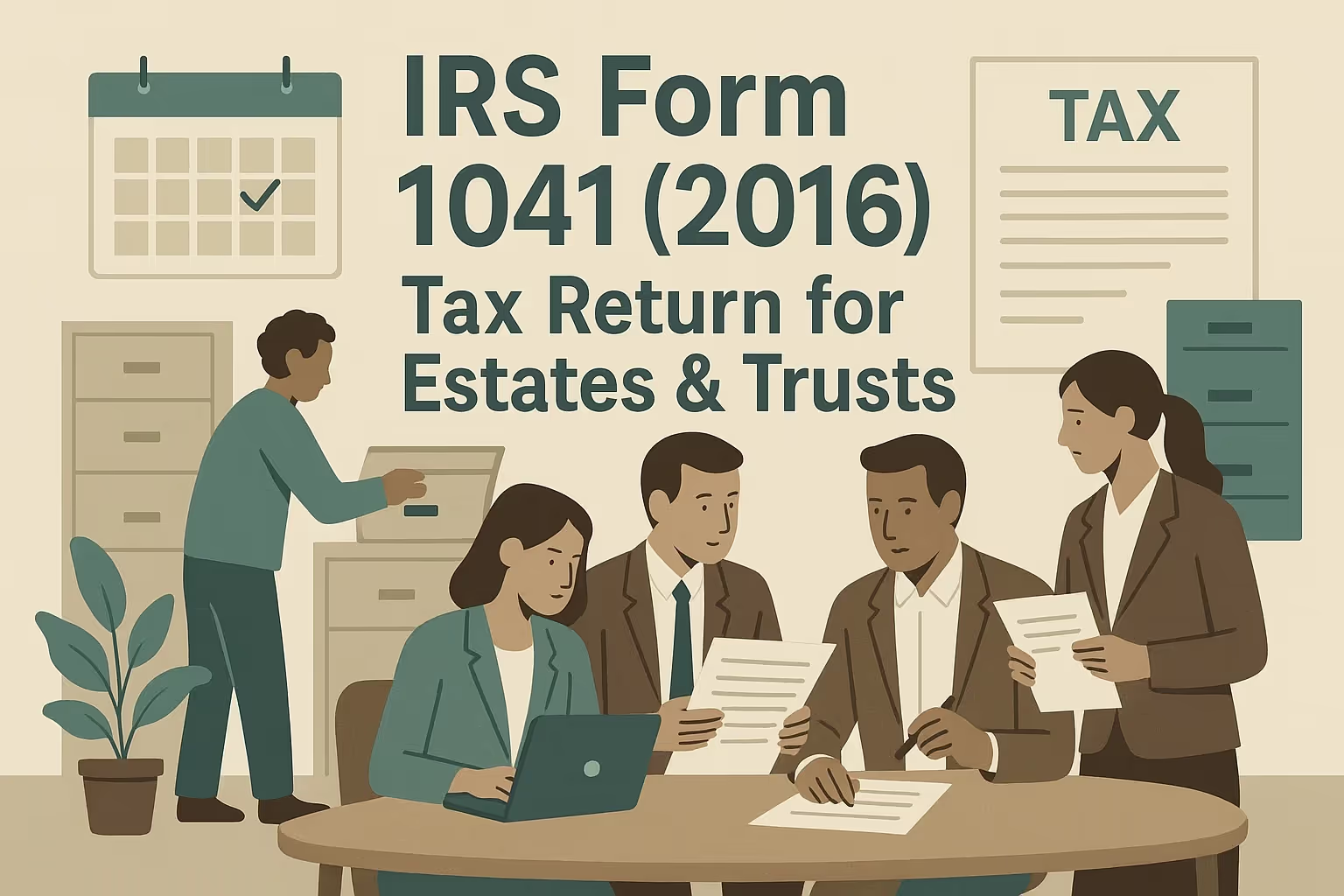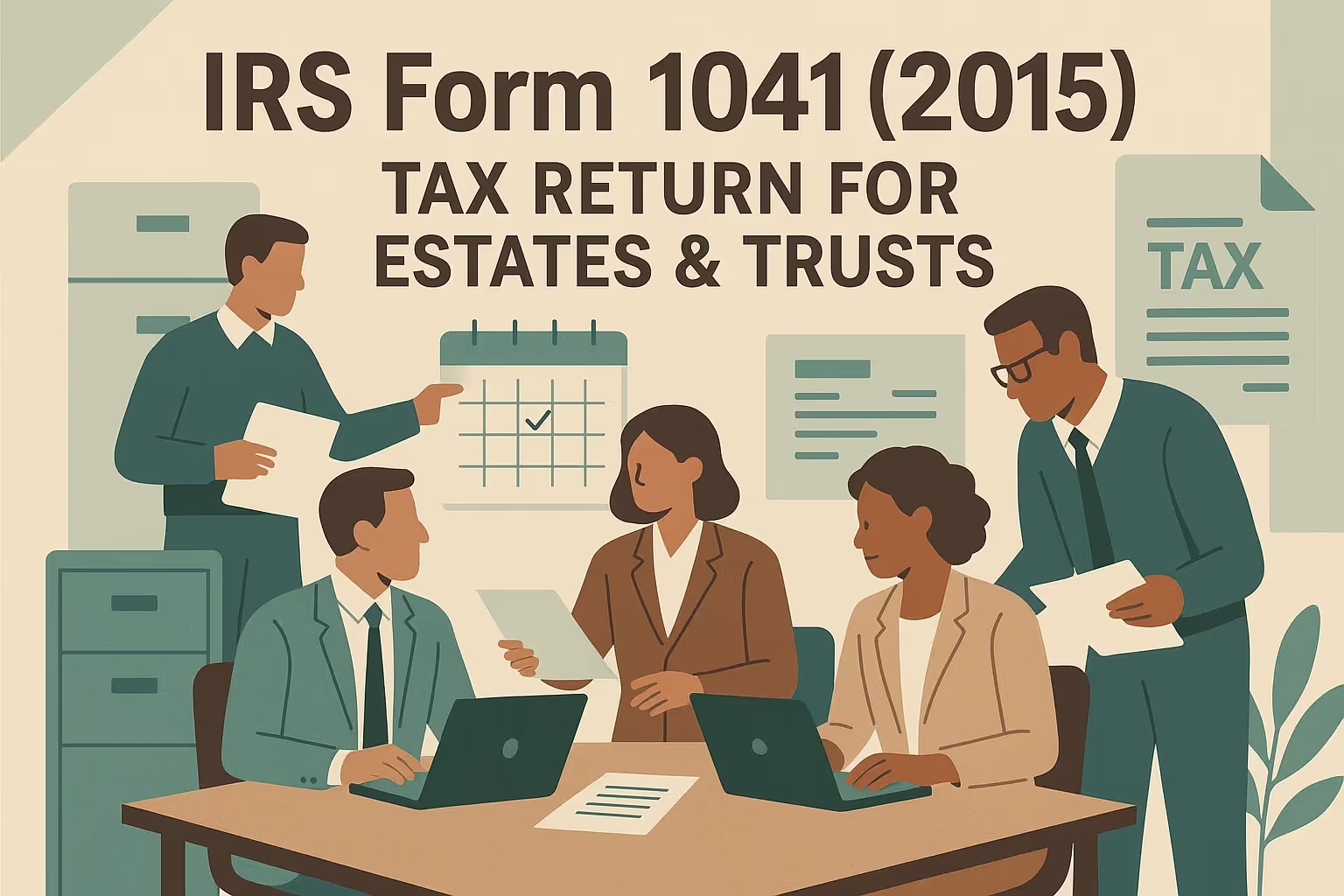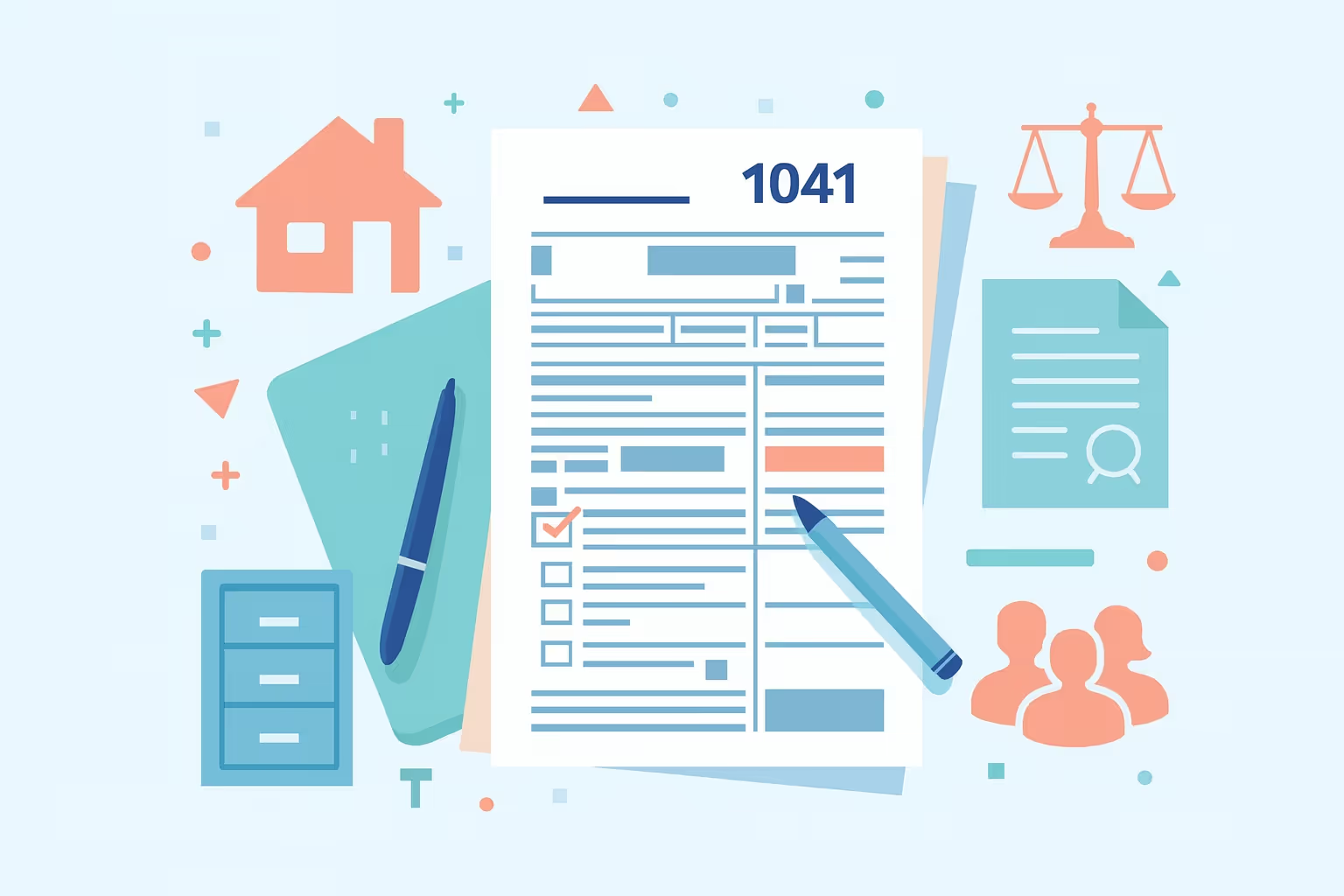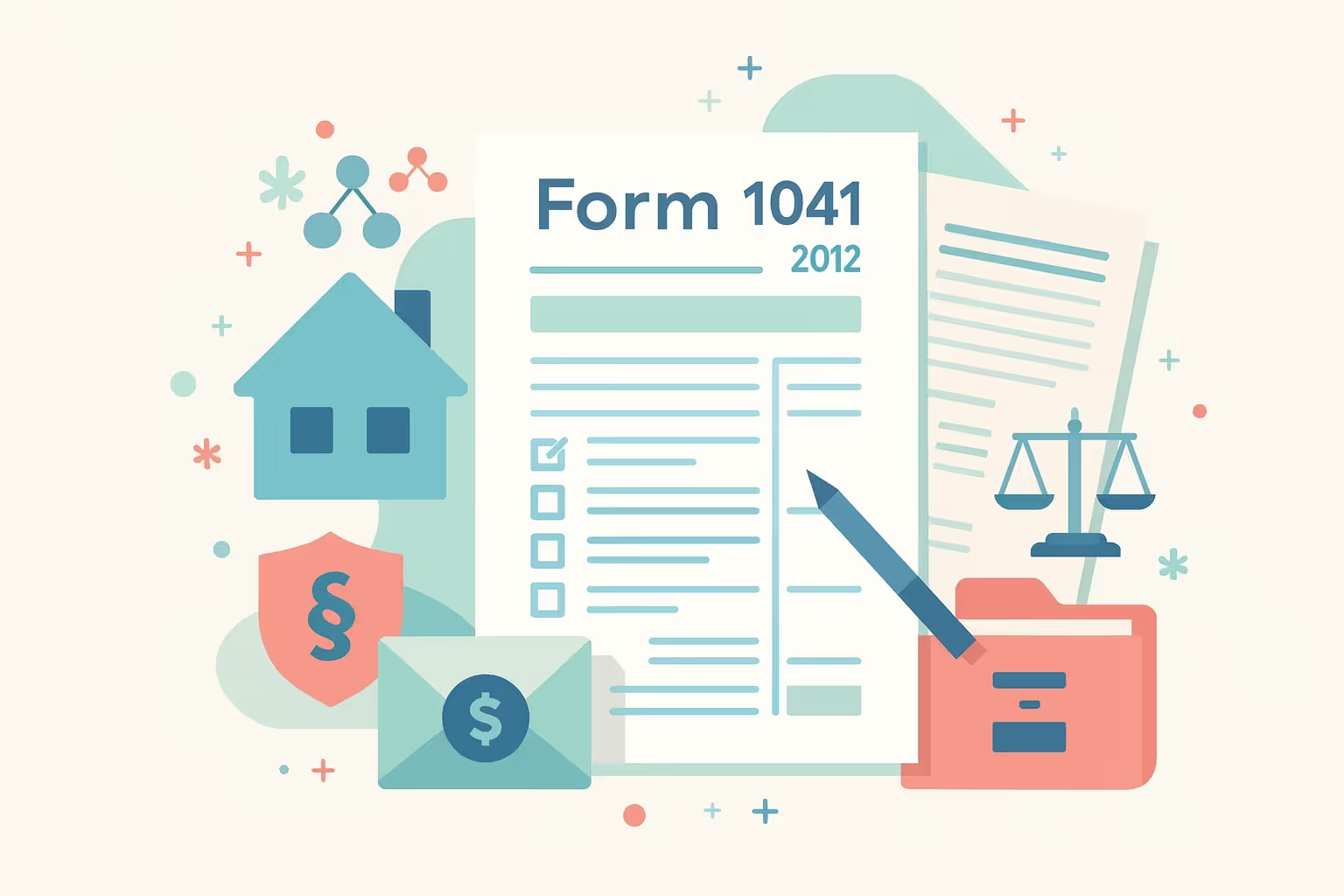IRS Form 1041 (2017): Tax Return for Estates & Trusts
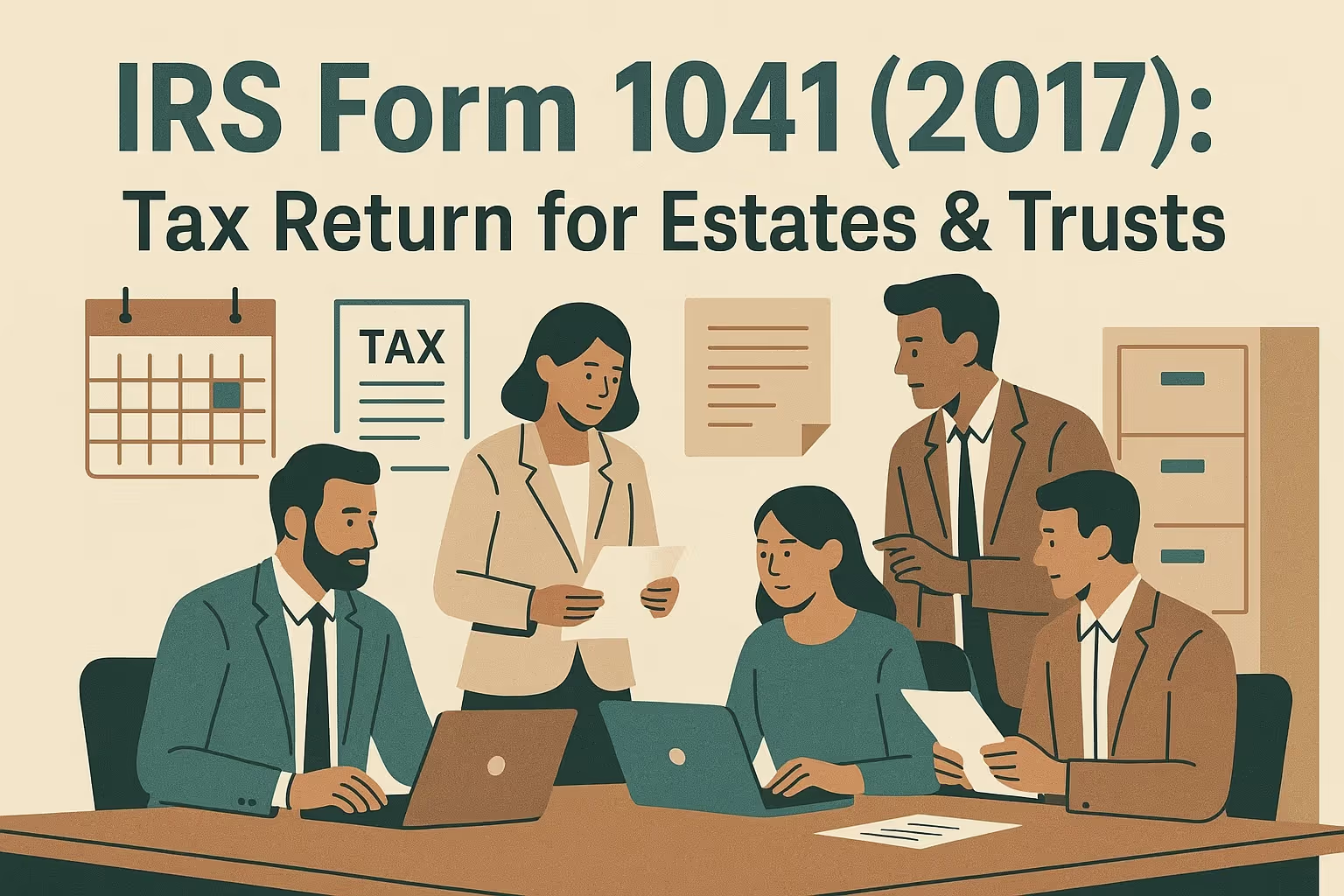
What IRS Form 1041 (2017) Is For
IRS Form 1041 (2017) is the U.S. Income Tax Return for Estates and Trusts used by a fiduciary to report income, deductions, gains, losses, and taxes for the taxable year. It helps determine how much income tax the estate or trust must pay on its income and how much is distributed to beneficiaries. The form also calculates credits, determines refund eligibility, and ensures filing information is complete.
An estate must file if it has a gross income of $600 or more, or if it has a nonresident alien beneficiary. A trust must file if it has any taxable income, gross income of $600 or more, or a nonresident alien beneficiary. Fiduciaries should include the estate’s or trust’s address, social security number or employer identification number, and complete schedule information as instructed. For additional information, refer to IRS instructions for Form 1041 (2017).
When You'd Use Form 1041 for 2017 (Late or Amended Filing)
A late or amended return may be required if you received an IRS notice about an unfiled return, discovered unreported income, or found errors after the original due date of April 17, 2018. Late filings often occur when executors or trustees are unaware of filing requirements, discover additional property or assets generating income, or receive delayed financial statements.
Refund claims are generally allowed within three years from the original due date or two years after paying tax, making April 17, 2021, the deadline for most 2017 refund claims. If you fail to submit the return by that date, penalties and interest may be applied. If you are resolving a late fiduciary return or multiple unfiled years, reviewing our guide on how to handle unfiled federal returns can help you determine the correct steps.
Key Rules Specific to 2017
- Capital gains tax brackets: The 0% rate applies to the first $2,550, the 15% rate applies to the amount between $2,550 and $12,500, and the 20% rate applies to amounts exceeding $12,500.
- Qualified disability trusts: The exemption was $4,050 and phased out beginning at $261,500 of modified AGI.
- Bankruptcy estates: The filing threshold was $10,400 in gross income.
- Due date: The due date was April 17, 2018 (not April 15) due to the Emancipation Day holiday in Washington, D.C.
Those working with older fiduciary filings or specific schedules can visit our IRS Form Help Center for organized instructions and form-specific resources.
Step-by-Step (High Level)
- Gather records: Request IRS transcripts to verify income, deductions, payments, and interest before completing the return.
- Complete 2017 form: Use the correct version of Form 1041 and follow all instructions carefully to ensure accuracy. Include the fiduciary’s name, address, telephone number, and identification numbers in the required manner.
- Attach schedules: Include Schedule K-1s for beneficiaries, Schedule A for charitable deductions, and Schedule J for accumulation distributions. Add supporting statements for business income, credits, or other trusts if applicable.
- File return: Sign the return as fiduciary and mail it to the correct IRS address or submit electronically using Form 8453-FE or 8879-F. Confirm that any payment website displays a locked padlock icon before submitting sensitive information online.
- Keep copies: Maintain copies of the return, receipts, and statements for a minimum of three years. Keep documentation showing when and how the return was filed, as well as any payment confirmation or account receipt.
If you have received IRS notices about your 2017 Form 1041, our guide to the IRS collection process explains each stage and what actions fiduciaries may need to take.
Common Mistakes and How to Avoid Them
- Incorrect calculation: Check IRS instructions and verify totals when computing the income distribution deduction.
- Missing forms: Issue a Schedule K-1 to every beneficiary who received a distribution.
- Wrong classification: Confirm which administration expenses belong on Form 1041 versus Form 706.
- Improper filing year: Verify whether the entity must use a calendar year or has elected a fiscal year.
- Premature final return: Mark “Final Return” only after all assets are distributed and all activity is complete.
- Identification errors: Enter the correct SSN or EIN and confirm nothing is missing.
When penalties apply due to late filing, incorrect figures, or missing forms, you may qualify for relief. Our guide to IRS penalty abatement explains reasonable cause criteria and first-time relief options for estates and trusts.
What Happens After You File
The IRS generally processes Form 1041 returns in six to eight weeks for paper filings and two to three weeks for electronic submissions. If the IRS identifies discrepancies, it may send a notice requesting additional information or clarification.
Payments can be made online, by mail, or in cash at approved businesses. Taxpayers should ensure that all online payments are processed on secure pages, which display a locked padlock icon. If the estate or trust cannot pay its remaining balance in full, reviewing how IRS payment plans work can help determine whether an installment agreement may be available.
FAQs
What penalties apply for filing my 2017 Form 1041 late?
The penalty is 5% of unpaid tax per month or part of a month, capped at 25%. If more than 60 days late, the minimum penalty is $510 or the unpaid tax, whichever is less. Interest accrues on both penalties and unpaid balances until full payment is received.
Can I still receive a refund if I file my 2017 return late?
Refunds can only be claimed within three years of the original due date or two years from when the tax was paid, whichever is later. For 2017 returns, that deadline was April 17, 2021. Filing after that date fulfills reporting requirements but does not generate a refund.
Do I need to get tax transcripts before filing my late return?
Yes, tax transcripts confirm the income, withholding, and prior filings that the IRS has on record. They help ensure that your return is complete, accurate, and consistent with IRS data.
Should I also file amended state returns?
Generally, yes, you should. If your federal amended return affects income, deductions, or distributions, most states require a corresponding state tax return amendment. Always check your state’s law and filing rules for specific deadlines and procedures.
What if I discover additional errors after filing my late or amended return?
You may file another amended return to correct any new errors, provided it is within the statute of limitations. Each amended filing must include corrected schedules, explanations, and updated K-1s for affected beneficiaries.
Can the estate or trust be audited for the 2017 tax year?
Yes, the IRS can audit a Form 1041 return for up to three years after the return is filed. If significant income omissions exist, the audit window extends to six years, and for fraudulent returns, there is no limitation period.
What documentation should I keep after filing?
Fiduciaries should retain copies of the complete return, as well as all attached schedules, receipts, statements, and proof of payment. These records should be kept for at least three years or longer if substantial income omissions occurred.






